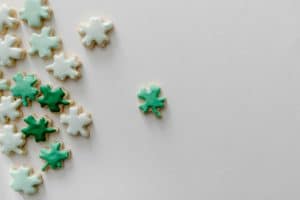Humor in Teaching: Making Lessons Memorable
Incorporating humor into the classroom has been a long-standing debate in the world of education. Some believe that the classroom should be strictly formal, while others argue that humor can bring life and energy to the learning process. However, one thing is for sure – incorporating humor in teaching can make lessons memorable for students. In this article, we will dive deeper into the art of using humor in teaching and how it can make lessons more engaging, impactful, and ultimately, unforgettable.
The Power of Humor in Teaching
Humor has the power to create a positive and engaging classroom environment. It breaks the monotony of traditional teaching methods and makes students more receptive to learning. When used correctly, humor can improve students’ attention, motivation, and overall mood. It also helps to establish a strong rapport between the teacher and students.
The Science Behind Laughter
Laughter is not just a reaction to something funny; it has a profound impact on our minds and bodies. When we laugh, our body releases endorphins, which are responsible for creating feelings of pleasure and reducing stress and anxiety. These endorphins also improve memory and increase creativity – both crucial aspects of learning. Therefore, incorporating humor into teaching can have a positive effect on students’ emotional and physical well-being, making lessons more enjoyable and memorable.
Incorporating Humor into Teaching
Humor should not be used haphazardly in the classroom. It requires careful planning and execution to be effective. Here are some ways to incorporate humor into teaching:
Use Appropriate Jokes and Memes
Adding a little bit of humor through jokes and memes can make a lesson more engaging and relatable. However, it is essential to use appropriate, relevant, and tasteful humor in the classroom. Inappropriate jokes or memes can be offensive and disrupt the learning process.
Share Personal Experiences
Using personal anecdotes and experiences can be a great way to incorporate humor into teaching. Students appreciate when teachers are open and share their personal lives, which can make for a light-hearted and memorable lesson. However, it is crucial to maintain professionalism and only share appropriate stories that relate to the lesson.
Utilize Visual Aids
Visual aids, such as funny images or videos, can be a great way to add humor to a lesson. It can be useful in breaking the ice or lightening the mood. However, it is essential to ensure that the visual aids are relevant, appropriate, and not distracting.
The Benefits of Using Humor in Teaching
Makes Learning Fun and Memorable
Adding humor to teaching can change the perception of learning from a chore to something enjoyable. When students are having fun, they are more likely to remember the information being taught. Humor can also help students to retain information better, making lessons more memorable and impactful.
Fosters Positive Relationships
Humor builds a favorable class atmosphere and a strong bond between the teacher and students. When students see that their teacher has a sense of humor, they are more likely to feel comfortable and safe in the classroom. This positive relationship can lead to better communication, trust, and ultimately, better learning outcomes.
Enhances Creativity and Critical Thinking
A classroom filled with laughter and humor can foster a creative and critical thinking environment. It allows students to think outside the box and come up with unique solutions and ideas. Humor can also stimulate students’ minds, leading to increased participation and engagement in the learning process.
In Conclusion
Incorporating humor into teaching can have a significant impact on the overall learning experience. It creates a positive, engaging, and memorable environment for students. However, it is crucial to use humor carefully and appropriately to avoid any negative consequences. With the right amount of humor, teachers can make lessons unforgettable, and students can enjoy the learning process. As the saying goes, “laughter is the best medicine,” and it certainly has a place in the classroom.










